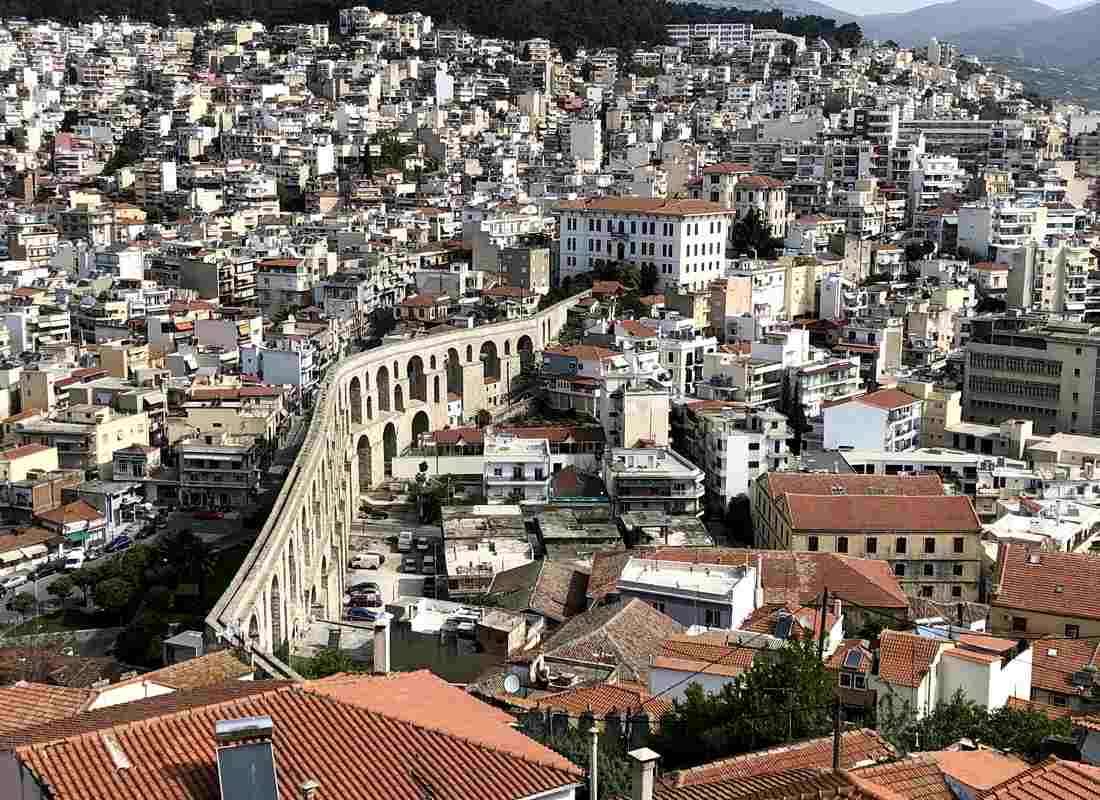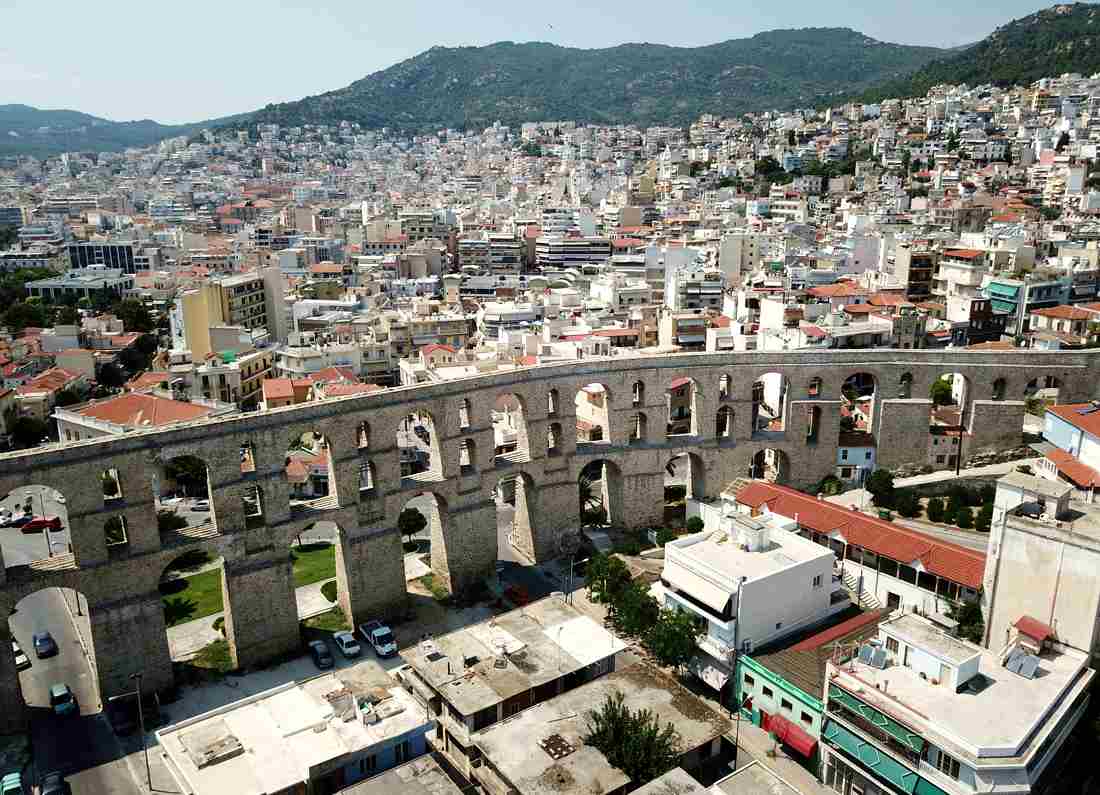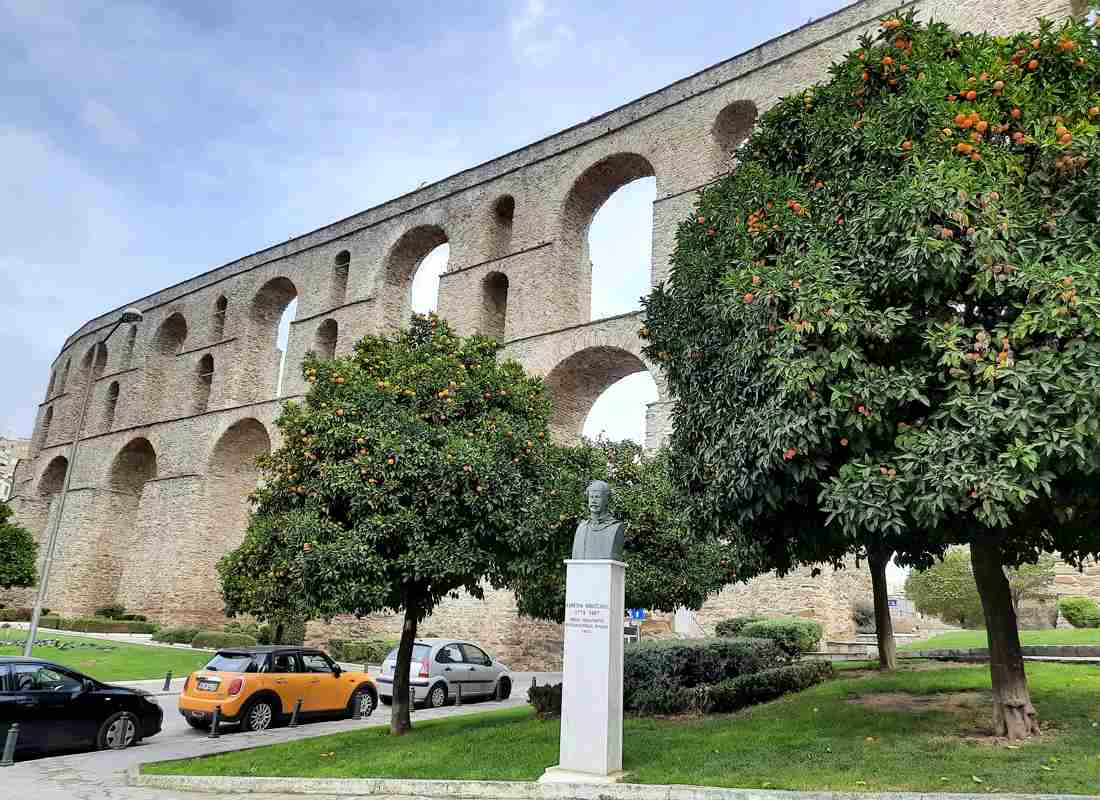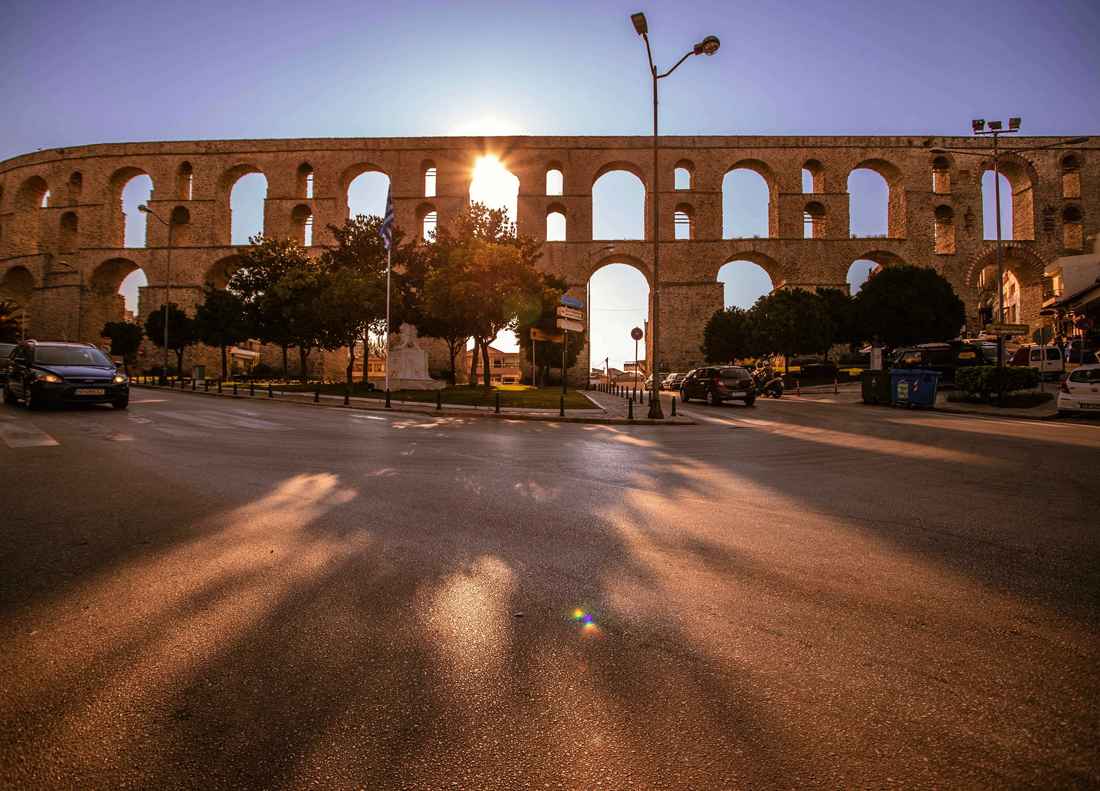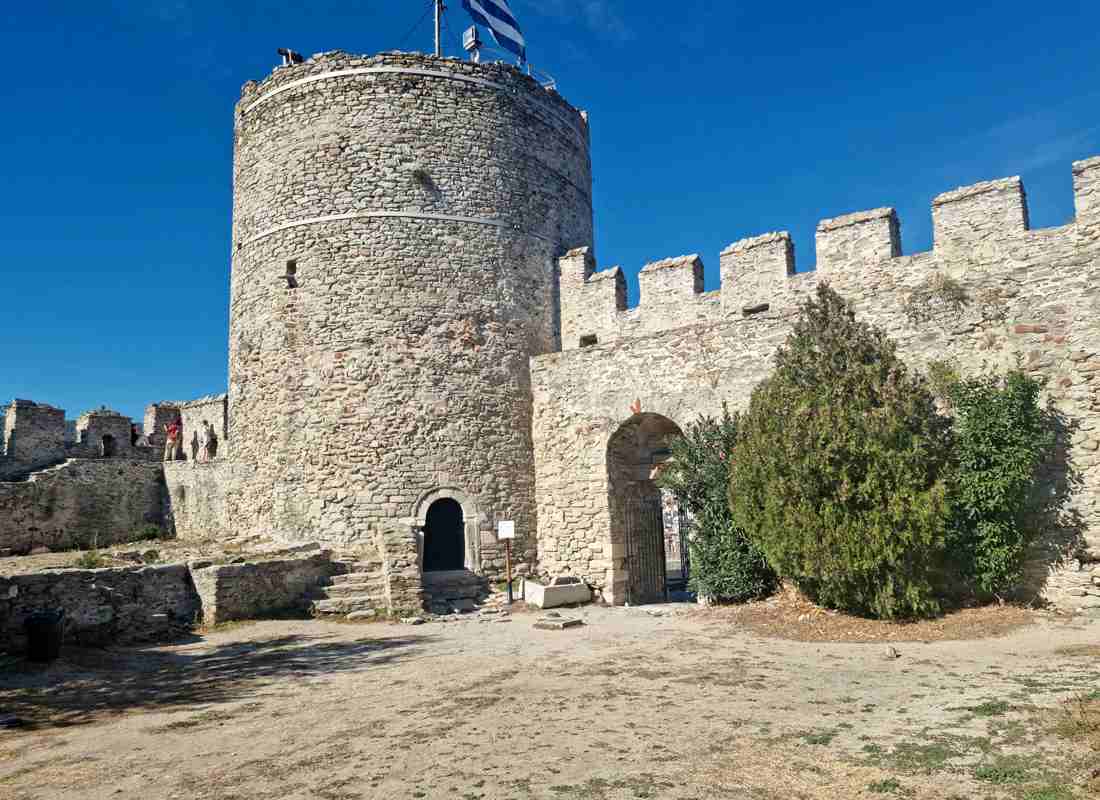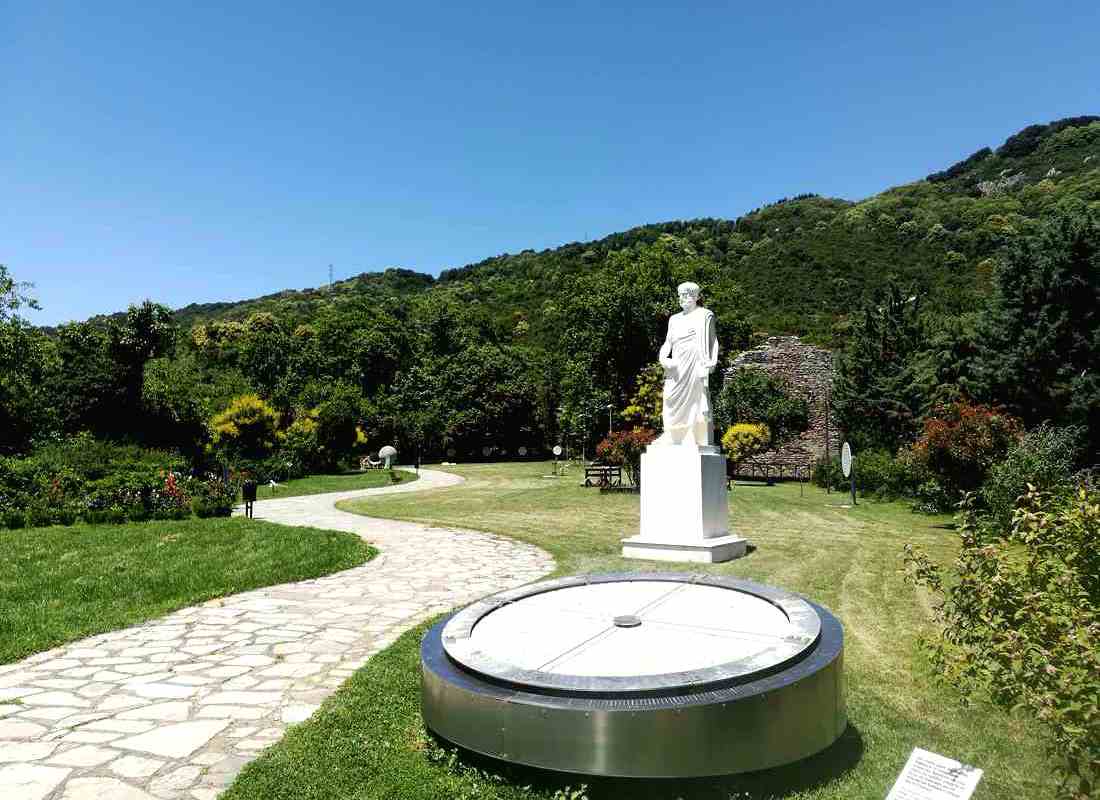
Kamares Aqueduct
Kavala's most recognizable landmark is the large arched aqueduct known as "Kamares". The aqueduct was built in the early 16th century during the Ottoman Empire and was probably built on the remains of the Roman and Byzantine aqueduct. So claimed the French traveler Belon, who visited Kavala in 1547, 20 years after the completion of the construction. The construction of the project was financed by Ibrahim Pasha and lasted about 10 years. The aqueduct is made of local granite and is 270 meters long and 25 meters high. It was the largest and most beautiful Aqueduct of that time which combines many types of arches such as pointed, semicircular, etc. The water originated from a spring located at an altitude of 400 meters and known as Mana tu Nero or Tria Caragacia or Subasi. Thus the water flowed along a long route of 6.5 kilometers, passing through five water bridges that were built to support the overland pipeline. The water then passed through the Su-yol neighborhood to finally reach the Aqueduct, which carried the water to the Panagia peninsula. In this way, the Aqueduct helped the city's water supply, which began to develop and became one of the most important cities in the Ottoman Empire. In the second half of the 19th century, problems with the city's water supply arose due to population growth and the creation of new neighborhoods. However, the aqueduct continued to serve the needs of the Panagia peninsula until the first decades of the 20th century, when it was replaced by a new network. During the Bulgarian occupation, the aqueduct was turned into a road, resulting in frequent pollution and the loss of large quantities of water. In 1922, after the settlement of refugees, the water supply from the Aqueduct was insufficient, so the Panagia Peninsula was supplied with water from the Agios Athanasios Reservoir. Today, the Aqueduct has lost its vital importance, but has retained its beauty and prestige, because it is a symbolic monument of the city of Kavala that stands out from everywhere.
Guest reviews
You may also be interested in similar information
Kavala Fortress
Kavala, Greece
Aristotle Park
Kavala, Greece


